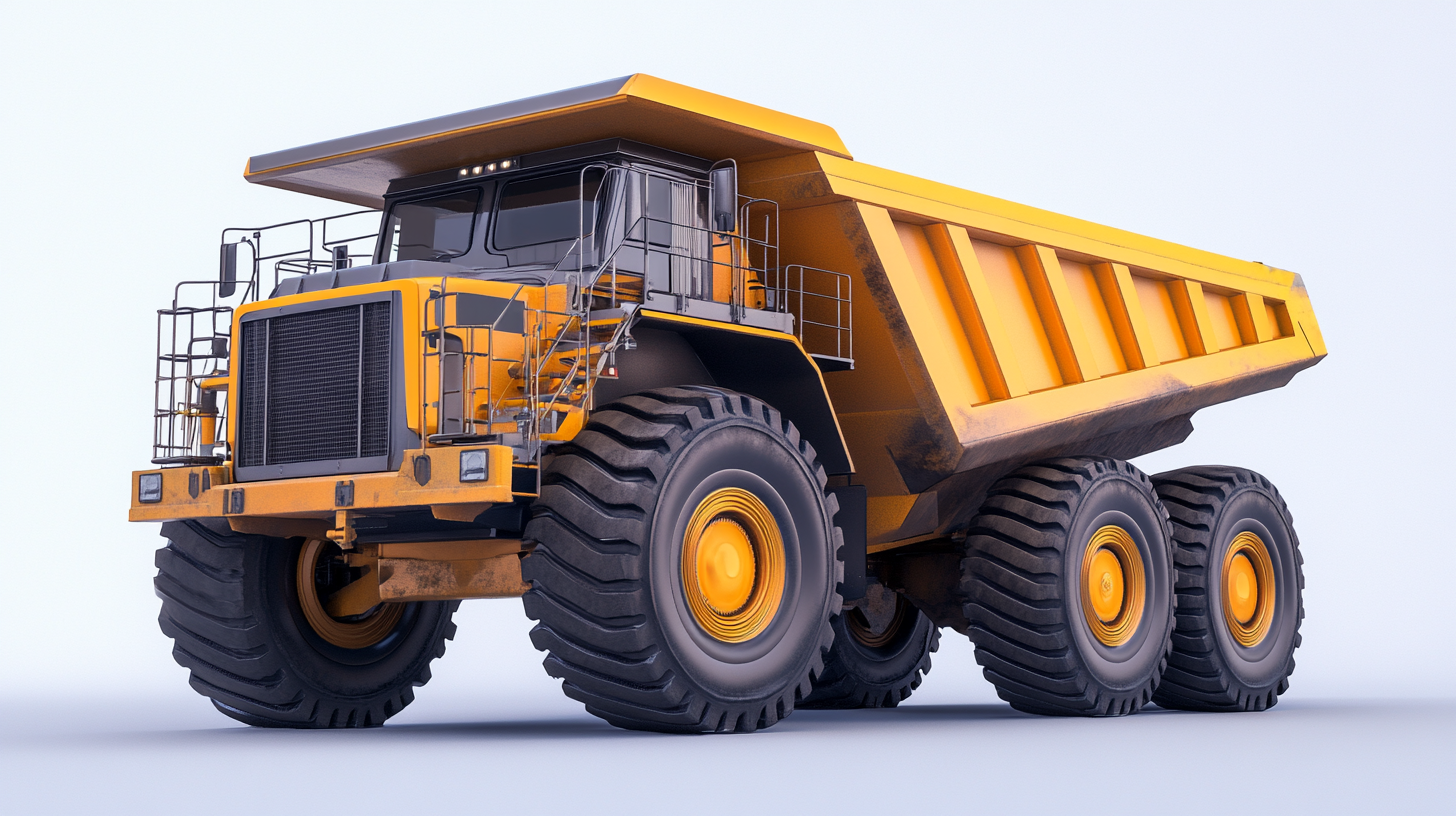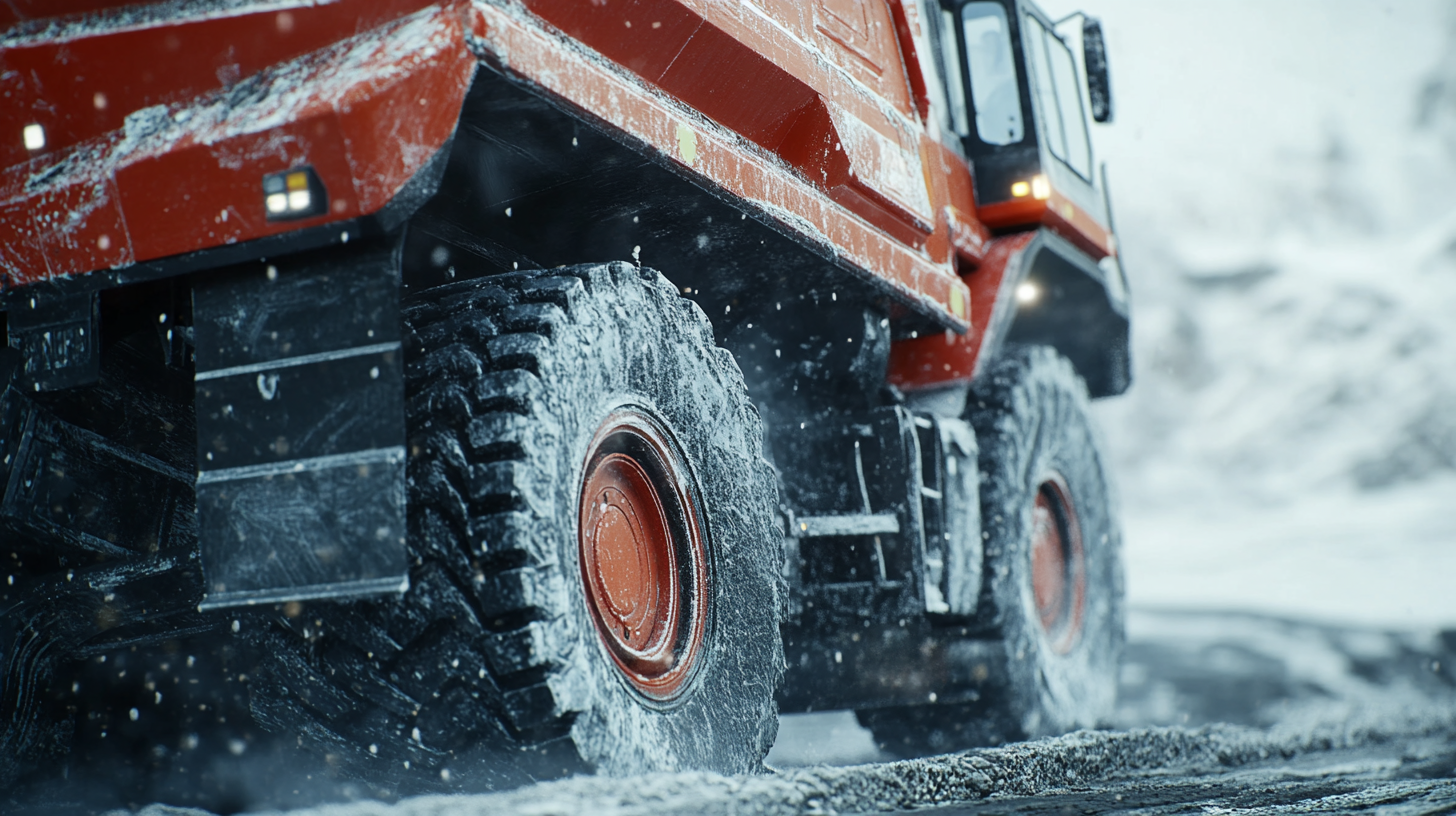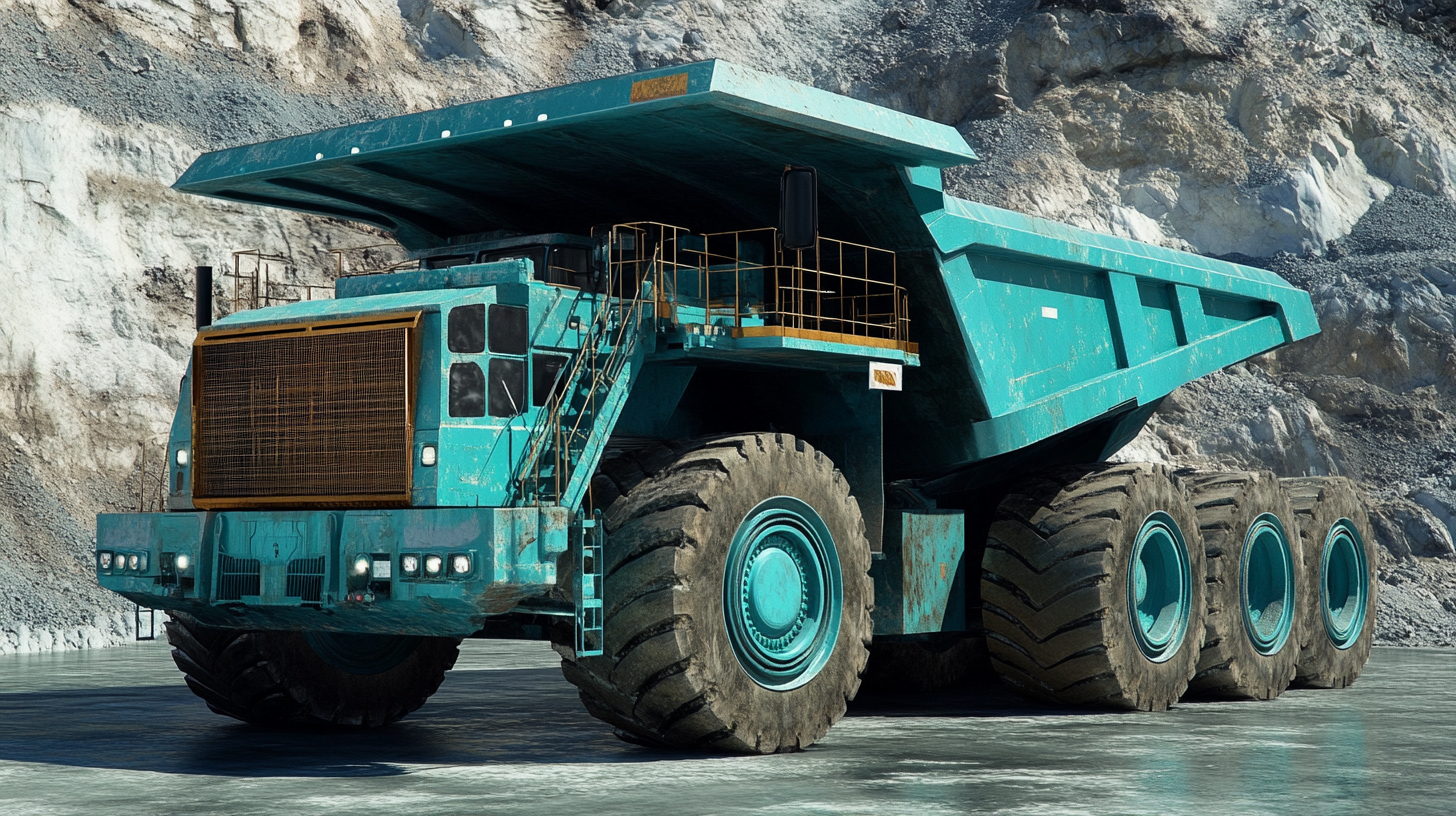In the ever-evolving landscape of modern mining operations, the utilization of advanced machinery plays a crucial role in enhancing productivity and efficiency. Among these machines, the Heavy Mining Truck stands out as a vital component that significantly contributes to the success of mining projects worldwide. These robust vehicles are designed to transport large volumes of materials, withstand harsh environmental conditions, and navigate challenging terrains, making them indispensable in the extraction and hauling processes. As the demand for minerals and resources continues to rise, understanding the features and applications of Heavy Mining Trucks becomes essential for mining companies seeking to optimize their operations. This blog will delve into the various capabilities these trucks offer, their impact on operational efficiency, and the future trends shaping their design and usage in the mining industry.

Heavy mining trucks play a crucial role in modern mining operations, equipped with features that enhance efficiency and productivity. One of the key features is their high payload capacity. For instance, trucks like the Caterpillar 797F can carry up to 400 tons of material, significantly increasing the volume of material transported per trip compared to conventional trucks. This capability not only reduces the number of trips required but also lowers operational costs, making it an attractive option for mining companies looking to maximize their output.
Another essential feature is advanced technology integration, such as GPS tracking and telematics systems. According to a report by the International Council on Mining and Metals (ICMM), the use of such technologies can lead to operational efficiencies of up to 25%. These systems allow for real-time monitoring of truck performance, optimizing routes and schedules to reduce fuel consumption and minimize downtime. Furthermore, modern heavy mining trucks are often designed with improved safety features, including better braking systems and enhanced visibility, which are vital in mitigating accidents in challenging mining environments.
Additionally, fuel efficiency remains a prominent concern in the industry. Recent studies indicate that companies adopting newer, more fuel-efficient truck models can reduce their fuel consumption by as much as 15-20%, contributing not only to cost savings but also to lowering their carbon footprint. As the mining sector continues to focus on sustainability, the adoption of heavy mining trucks with these key features will be integral to improving operational efficiency and enhancing overall productivity in mining operations.

The integration of advanced technology in heavy mining trucks has revolutionized their performance, enhancing efficiency and safety in modern mining operations. With the adoption of cutting-edge systems such as GPS, telematics, and autonomous driving capabilities, these trucks are now able to optimize their routes and minimize fuel consumption. Real-time data collection enables operators to monitor vehicle performance closely, leading to timely maintenance and reduced downtime.
Moreover, the application of artificial intelligence (AI) and machine learning algorithms allows heavy mining trucks to adapt to changing environments and operational demands. For instance, AI systems can analyze terrain conditions and adjust load distribution to improve traction and stability, thus enhancing overall productivity. Additionally, advanced braking systems and collision avoidance technologies significantly increase safety for both the trucks and the workers in the vicinity, minimizing the risks associated with heavy machinery in hazardous environments. As a result, modern heavy mining trucks not only contribute to greater output but also ensure a safer and more efficient mining process.
This pie chart illustrates the distribution of various performance metrics of heavy mining trucks in modern mining operations, showcasing the impact of advanced technology on their efficiency and productivity.
When it comes to heavy mining trucks, the market is populated with various models designed to meet specific operational needs. According to a recent report by Grand View Research, the global market for heavy mining trucks is expected to reach approximately $9.5 billion by 2026, driven by both demand and technological advancements. Notably, models such as the Caterpillar 797F and the Komatsu 980E have emerged as frontrunners in terms of capacity and efficiency. The Caterpillar 797F, for instance, boasts a payload capacity of nearly 400 tons and features advanced load-and-haul technologies that enhance productivity.
Another critical player in this sector is the Volvo A60H, known for its versatility in challenging terrains. With its ability to operate in adverse conditions, the A60H demonstrates how modern engineering can improve operational efficiency. Analysis shows that trucks like the Volvo A60H not only minimize downtime but also contribute significantly to reduced fuel consumption per ton transported, addressing both economic and environmental considerations. As mining operations evolve, ongoing comparisons of these models highlight the importance of integrating advanced technologies to optimize performance and ensure safety on site.
| Truck Model | Load Capacity (tons) | Engine Power (HP) | Fuel Efficiency (L/100km) | Applications |
|---|---|---|---|---|
| CAT 797F | 400 | 4000 | 50 | Open-pit mining |
| Komatsu 980E-4 | 400 | 4000 | 45 | Heavy mining and earthmoving operations |
| BelAZ 75710 | 450 | 2300 | 60 | Coal, iron ore, and other large-scale mining |
| Volvo A60H | 35 | 550 | 30 | Site development and road construction |
Heavy mining trucks play a crucial role in various mining environments, enhancing efficiency and productivity. In open-pit mining, these trucks are indispensable for transporting large volumes of materials over rugged terrains. Their robust design allows them to carry significant payloads, which is essential for the rapid removal of overburden and the transport of ore to processing facilities. The ability to navigate treacherous conditions while maintaining high-speed transport makes them vital assets in such operations.
In underground mining, specialized heavy trucks are used to maneuver through narrow tunnels and ramps. These trucks are typically designed with lower profiles and tighter turning radii to safely transport ore and supplies from deep within the mine to the surface. Additionally, the versatility of heavy mining trucks extends to their use in quarries and construction projects, where they can efficiently handle a variety of materials. Their adaptability to different environments and tasks underscores their importance in the modern mining industry, making them an integral part of mining operations across the globe.
In the realm of modern mining operations, the integration of heavy mining trucks significantly contributes to overall efficiency. However, as sustainability has become a central concern in various industries, the mining sector is investigating ways to reduce its environmental footprint. Heavy mining trucks, while essential for transporting materials, are also being optimized for sustainability through advancements in technology and innovative operational practices.
One approach to enhancing the sustainability of heavy mining trucks is the development of electric and hybrid models. These vehicles generate lower emissions compared to their diesel counterparts, addressing air quality issues prevalent in mining regions. Additionally, the use of alternative fuels, such as biodiesel or hydrogen, can further reduce greenhouse gas emissions. By leveraging these advanced technologies, mining operations can not only improve their sustainability profile but also meet regulatory requirements and stakeholder expectations.
Moreover, implementing efficient logistics and route planning can minimize the distance trucks travel, thereby lowering fuel consumption and reducing wear and tear on the vehicles. Advanced data analytics are being employed to assess the optimal routes in real time, ensuring that trucks operate at peak efficiency. Incorporating these practices not only enhances operational efficiency but also contributes to the overall sustainability goals of mining companies, paving the way for a greener future in the industry.
